The remarkable life of artist Carmen Herrera: 1915-2022
Carmen Herrera, the Cuban-born American artist whose experiments with space and colour blazed a trail in geometric abstraction, has died in New York aged 106
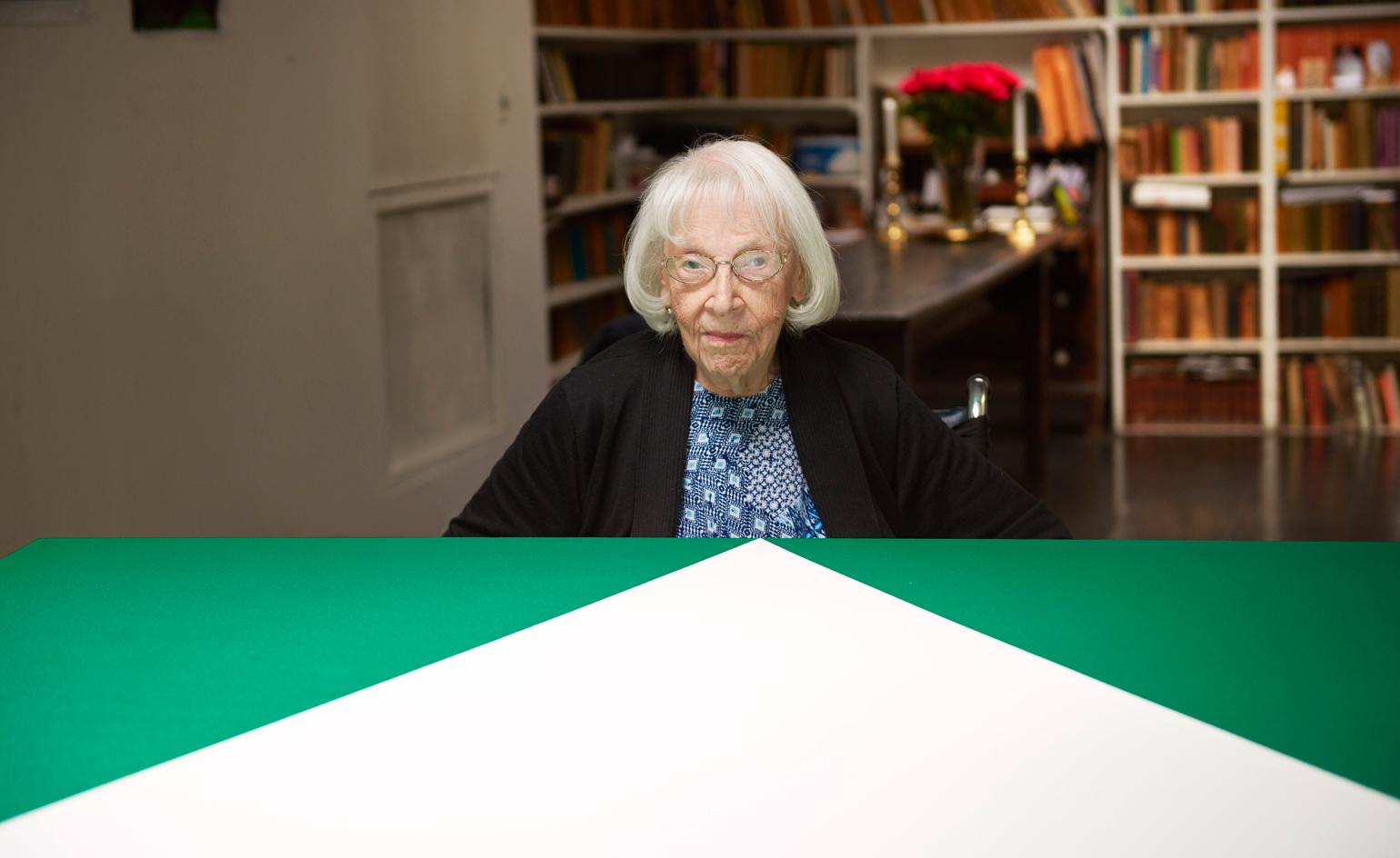
Havana-born American artist Carmen Herrera, a pioneer of 20th-century abstract painting, has died aged 106. She passed away peacefully in her sleep on Sunday 13 February 2022 at her apartment and studio in New York, where she had lived and worked since 1967. Her death was announced by Lisson Gallery, which has represented her since 2010.
Herrera developed a keen interest in painting while studying architecture at Universidad de La Habana, Cuba, in 1938. During this time, she met the love of her life, the American professor Jesse Loewenthal, and together they moved to New York in 1939 where Herrera enrolled at the Arts Students League and further developed her painting practice. The artist frequently travelled to Paris, and became an active member of the Salon des Réalités Nouvelles; she took part in a series of exhibitions alongside Max Bill and Piet Mondrian, among other key figures of the Suprematism movement.
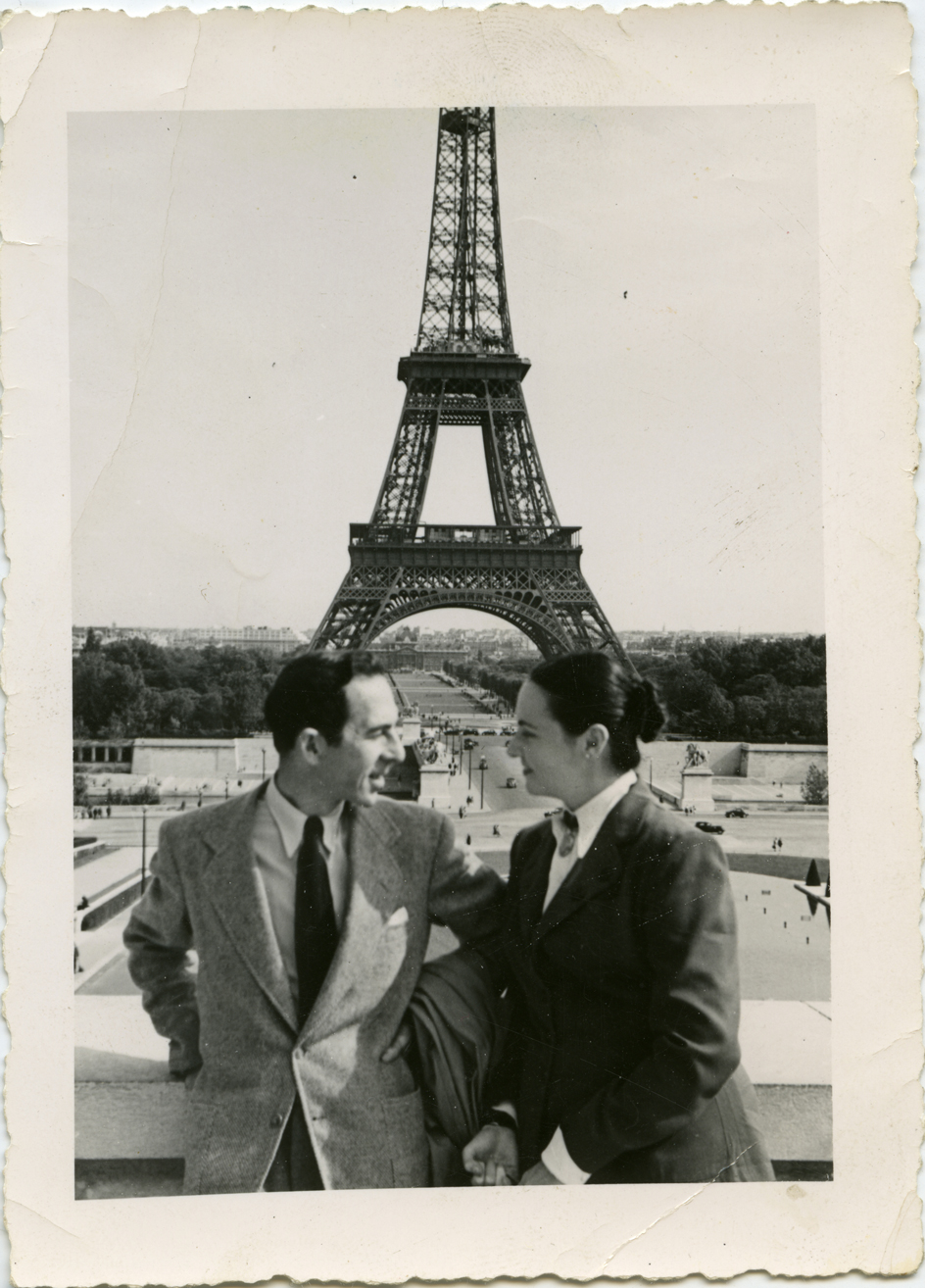
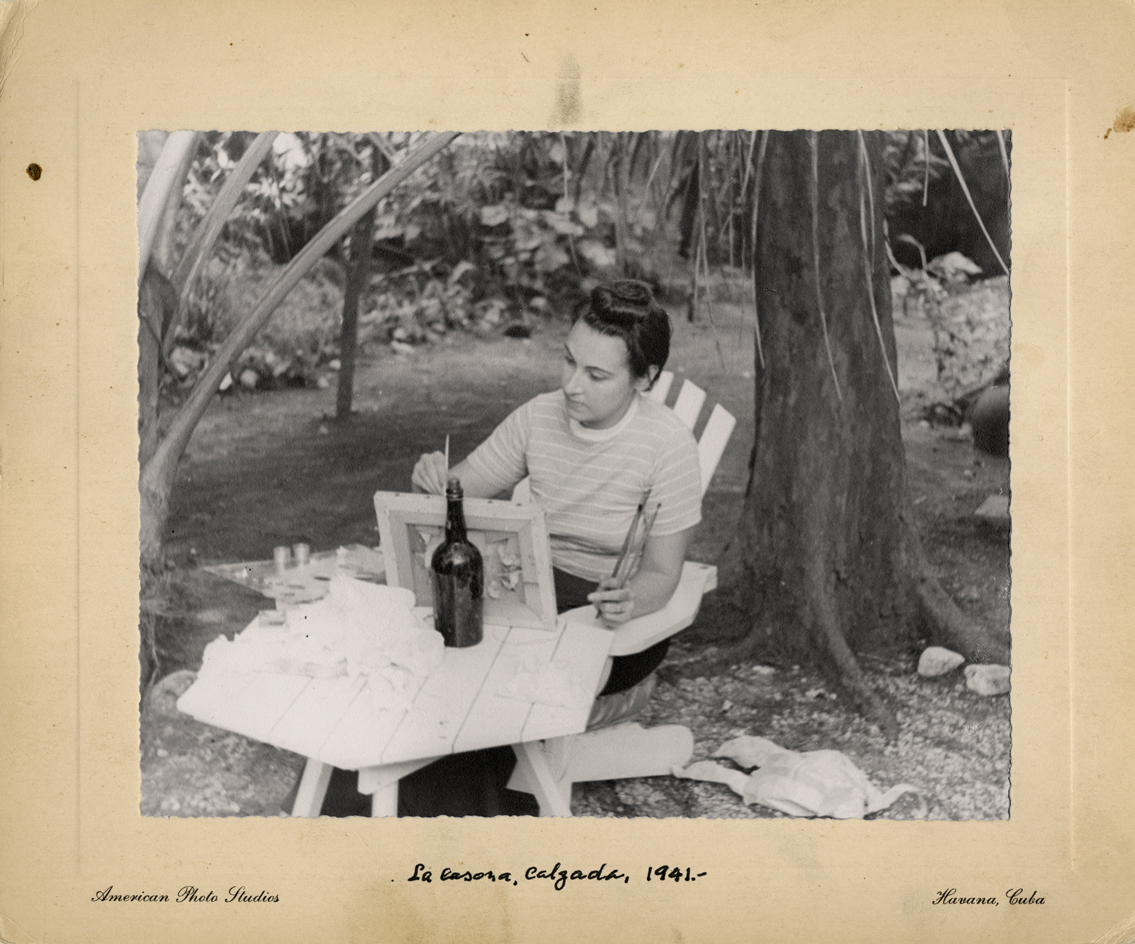
Top: Carmen Herrera and Jesse Loewenthal in front of the Eiffel Tower, Paris, c.1948-53. Above: Carmen Herrera painting, 1941.
Herrera’s earlier work was refined and abstract, characterised by a restrained approach: ‘I began a life-long process of purification, a process of taking away what isn’t essential’, she would later say, reminiscing on work created in her post-war years in Paris. There, she would produce some of her most iconic works, including Green Garden (1950), a striking piece evocative of tropical vegetation and landscapes. Later on, many stylistic comparisons were drawn between Herrera and Ellsworth Kelly, who was also developing his practice in post-war Paris.
In 1954, Herrera relocated permanently to New York. While undoubtedly an icon of abstraction, Herrera was overlooked for much of her career, particularly in relation to her male contemporaries. Her friends Barnett Newman and Leon Polk Smith were fervent advocates of her work, but the art critics at the time were not; Herrera would have to wait decades before her due recognition.
Despite this, Herrera persevered. From the late 1950s to the early 1970s, she explored the gravity of shapes and colours and worked towards the production of Blanco y Verde (1959–1971), a series of 15 paintings that would go on to form one of her most significant bodies of work. This 12-year project was characterised by sharp, emerald-hued triangles painted on white canvases, with edges coated in the same colour – an innovative approach that allowed viewers to perceive the work as both a painting and a three-dimensional structure. This early experimentation with sculpture would eventually lead to the Estructura series comprising monochrome paintings on heavy chunks of wood.
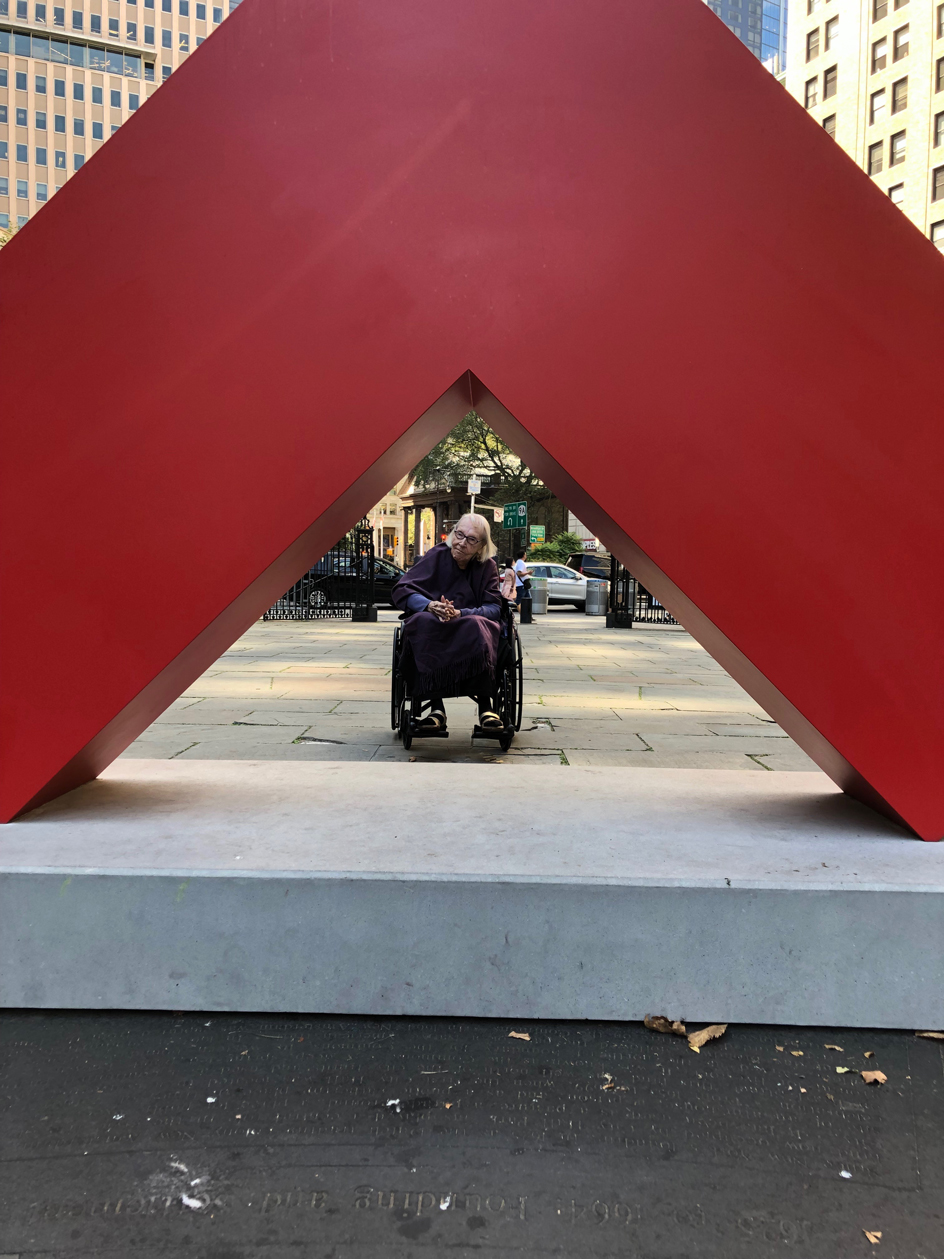
Carmen Herrera visiting 'Estructuras Monumentales', an exhibition by Public Art Fund in City Hall Park, NY on September 25, 2019.
While minimal, Herrera’s work is layered in complex, often deeply personal associations. But her work also harbours a universality, inviting viewers to use their imagination, and establish their own opinions and perspectives.
Closely aligned with Latin American conceptual painting, the oeuvre of Carmen Herrera has initiated, quietly but steadily, a dialogue within the global history of modernist abstraction.
In 2017, Herrera’s work was the subject of a substantial solo exhibition at the Whitney Museum of American Art in New York. The show, ‘Carmen Herrera: Lines of Sight’, curated by Dana Miller consisted of a series of paintings and installations putting the spotlight on 1948–1978, a seminal period in the artist’s career. Herrera also had important retrospectives at the Alternative Museum (1984) and El Museo del Barrio (1998) in New York, as well as at Ikon in Birmingham, UK (2009), curated by Nigel Prince. Herrera also inaugurated Lisson’s first New York gallery in May 2016, with an exhibition of works all made in her 100th year.
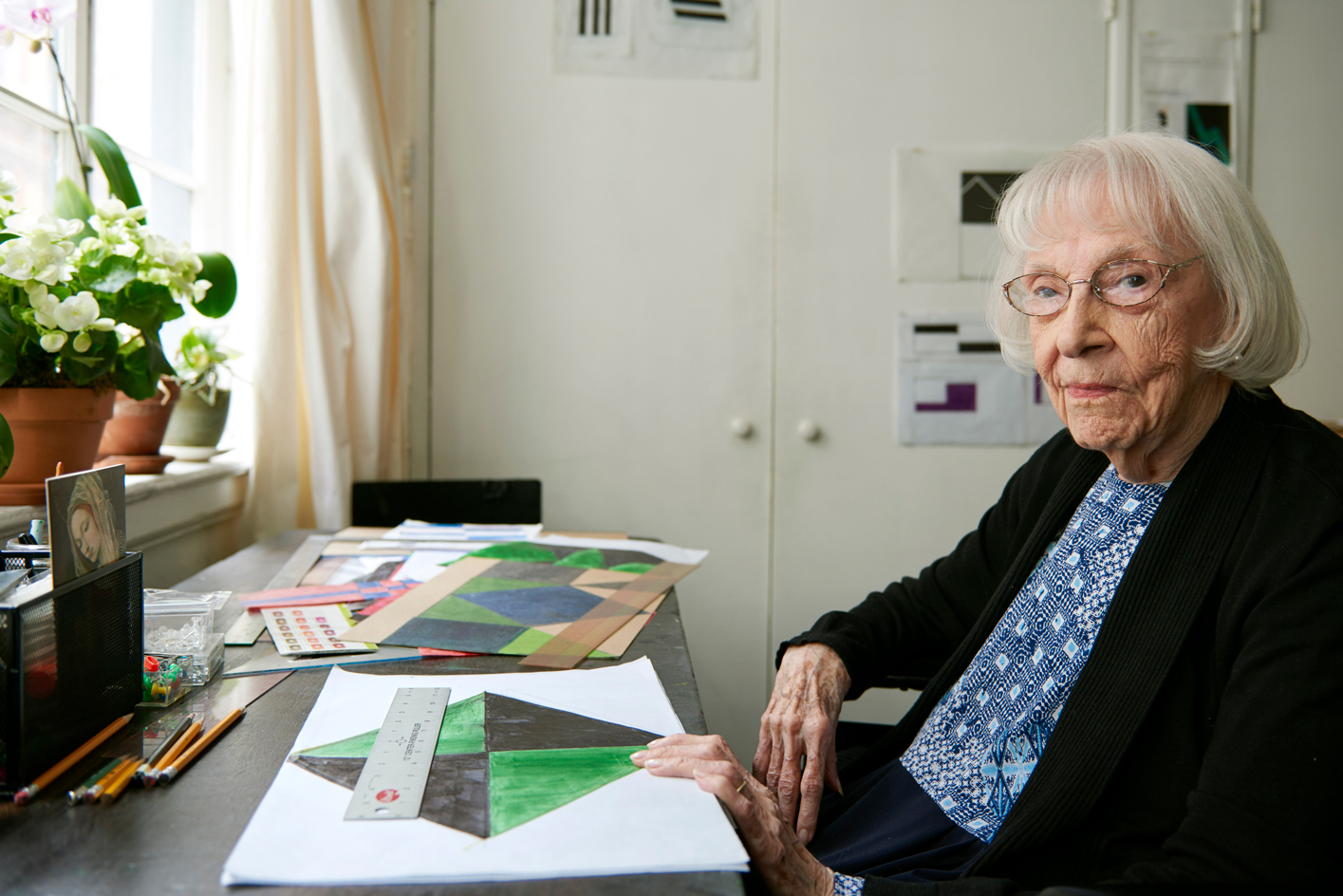
Carmen Herrera in her Studio, 2015.
Wallpaper* Newsletter
Receive our daily digest of inspiration, escapism and design stories from around the world direct to your inbox.
-
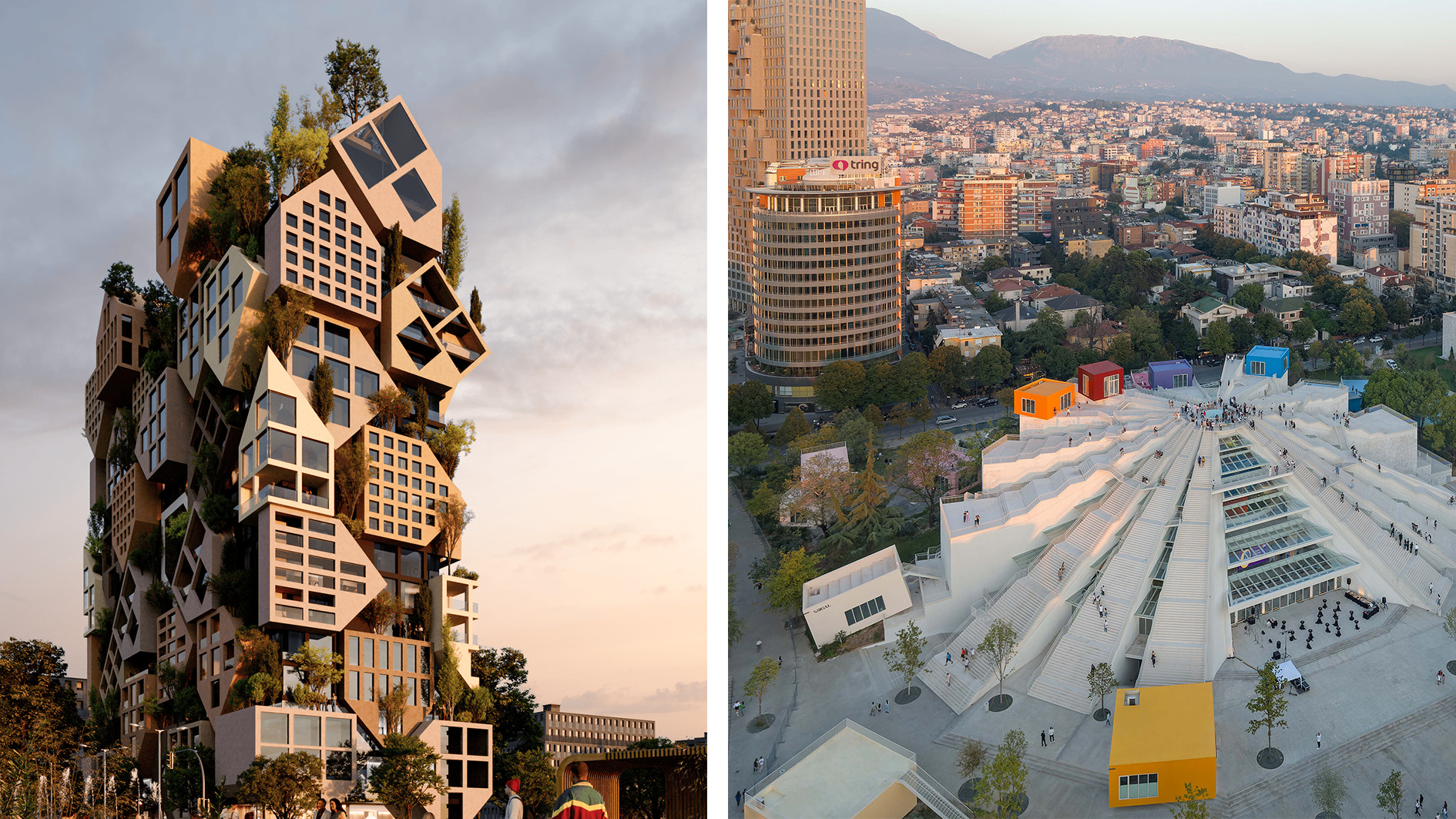 Isolation to innovation: Inside Albania’s (figurative and literal) rise
Isolation to innovation: Inside Albania’s (figurative and literal) riseAlbania has undergone a remarkable transformation from global pariah to European darling, with tourists pouring in to enjoy its cheap sun. The country’s glow-up also includes a new look, as a who’s who of international architects mould it into a future-facing, ‘verticalising’ nation
By Anna Solomon
-
 The Lighthouse draws on Bauhaus principles to create a new-era workspace campus
The Lighthouse draws on Bauhaus principles to create a new-era workspace campusThe Lighthouse, a Los Angeles office space by Warkentin Associates, brings together Bauhaus, brutalism and contemporary workspace design trends
By Ellie Stathaki
-
 Extreme Cashmere reimagines retail with its new Amsterdam store: ‘You want to take your shoes off and stay’
Extreme Cashmere reimagines retail with its new Amsterdam store: ‘You want to take your shoes off and stay’Wallpaper* takes a tour of Extreme Cashmere’s new Amsterdam store, a space which reflects the label’s famed hospitality and unconventional approach to knitwear
By Jack Moss
-
 Leonard Baby's paintings reflect on his fundamentalist upbringing, a decade after he left the church
Leonard Baby's paintings reflect on his fundamentalist upbringing, a decade after he left the churchThe American artist considers depression and the suppressed queerness of his childhood in a series of intensely personal paintings, on show at Half Gallery, New York
By Orla Brennan
-
 Desert X 2025 review: a new American dream grows in the Coachella Valley
Desert X 2025 review: a new American dream grows in the Coachella ValleyWill Jennings reports from the epic California art festival. Here are the highlights
By Will Jennings
-
 In ‘The Last Showgirl’, nostalgia is a drug like any other
In ‘The Last Showgirl’, nostalgia is a drug like any otherGia Coppola takes us to Las Vegas after the party has ended in new film starring Pamela Anderson, The Last Showgirl
By Billie Walker
-
 ‘American Photography’: centuries-spanning show reveals timely truths
‘American Photography’: centuries-spanning show reveals timely truthsAt the Rijksmuseum in Amsterdam, Europe’s first major survey of American photography reveals the contradictions and complexities that have long defined this world superpower
By Daisy Woodward
-
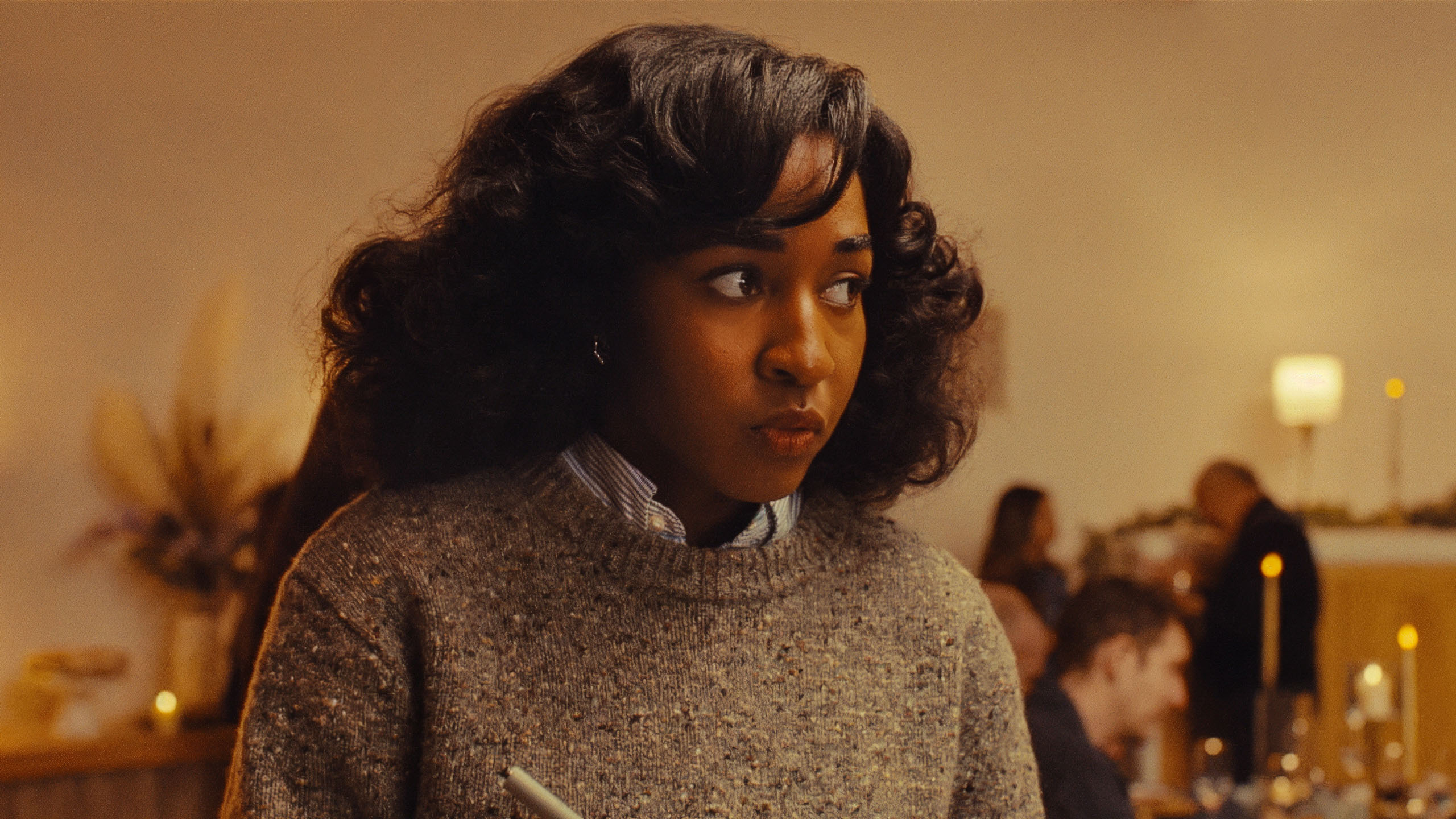 Sundance Film Festival 2025: The films we can't wait to watch
Sundance Film Festival 2025: The films we can't wait to watchSundance Film Festival, which runs 23 January - 2 February, has long been considered a hub of cinematic innovation. These are the ones to watch from this year’s premieres
By Stefania Sarrubba
-
 Remembering David Lynch (1946-2025), filmmaking master and creative dark horse
Remembering David Lynch (1946-2025), filmmaking master and creative dark horseDavid Lynch has died aged 78. Craig McLean pays tribute, recalling the cult filmmaker, his works, musings and myriad interests, from music-making to coffee entrepreneurship
By Craig McLean
-
 What is RedNote? Inside the social media app drawing American users ahead of the US TikTok ban
What is RedNote? Inside the social media app drawing American users ahead of the US TikTok banDownloads of the Chinese-owned platform have spiked as US users look for an alternative to TikTok, which faces a ban on national security grounds. What is Rednote, and what are the implications of its ascent?
By Anna Solomon
-
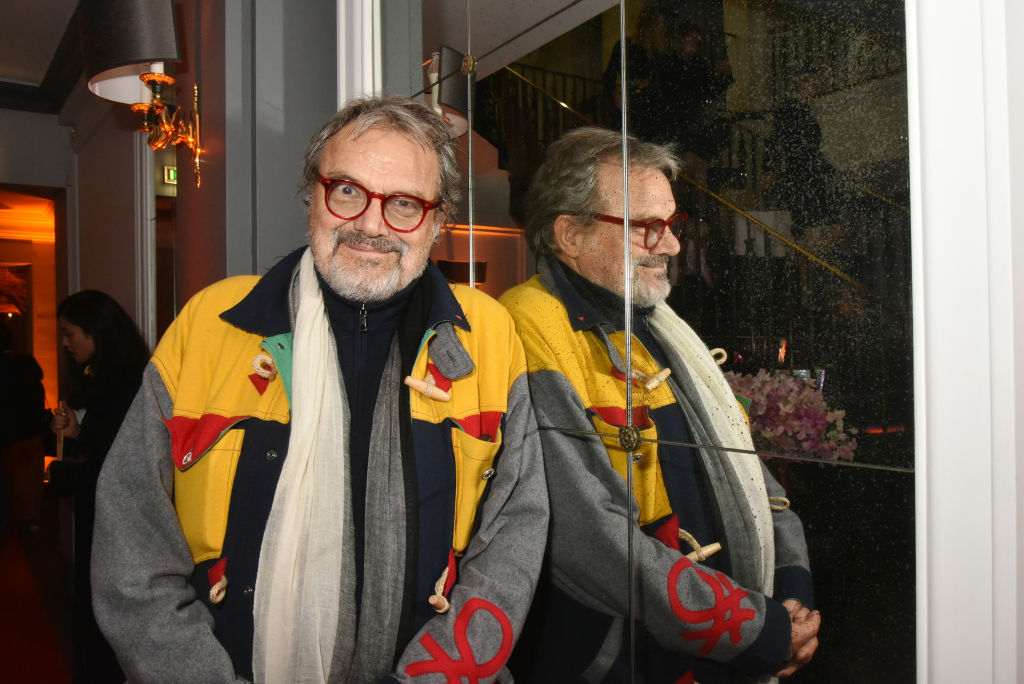 Remembering Oliviero Toscani, fashion photographer and author of provocative Benetton campaigns
Remembering Oliviero Toscani, fashion photographer and author of provocative Benetton campaignsBest known for the controversial adverts he shot for the Italian fashion brand, former art director Oliviero Toscani has died, aged 82
By Anna Solomon